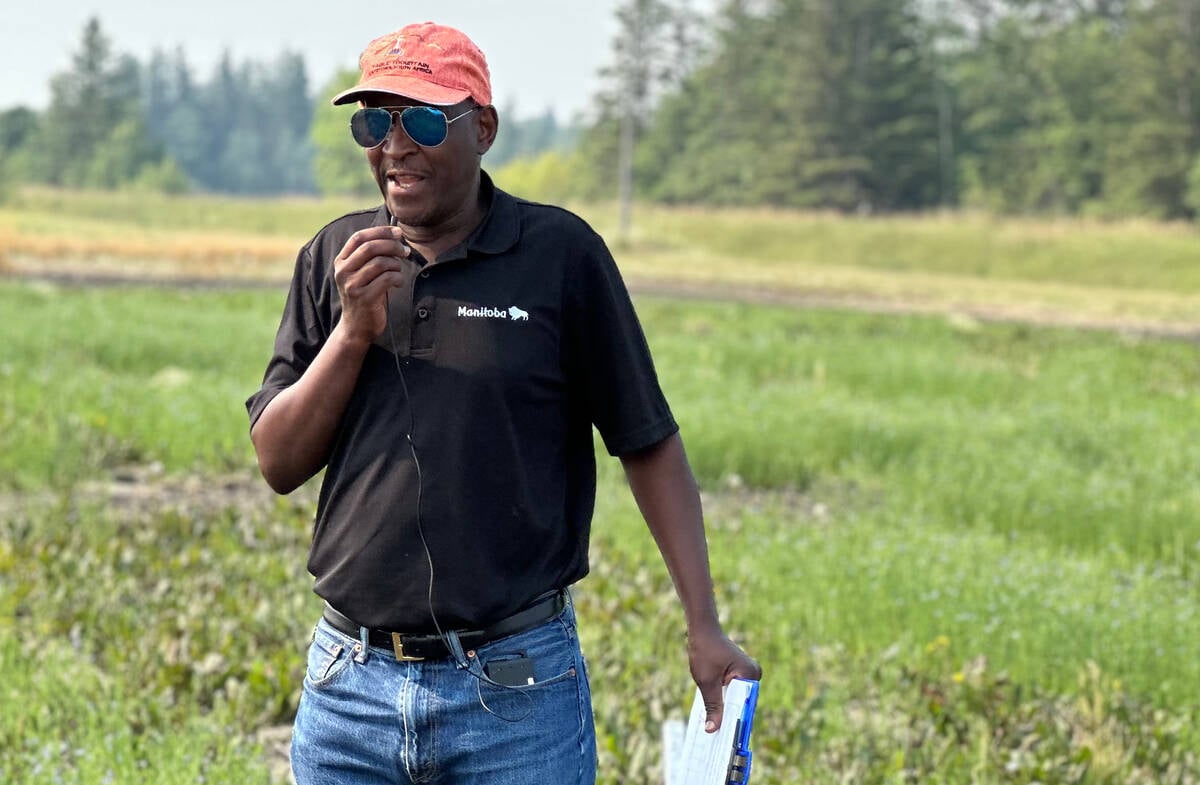Weekly provincial summary
Seeding of spring wheat, barley, oats, canola, potatoes, and grain corn has occurred in various areas across Manitoba. There has been limited seeding completed to date.
Winter wheat and fall rye crops are being assessed for winter survival and establishment; winterkill and injury is being reported in some fields. In most cases, winter wheat stands that only germinated this spring are more variable. Fertilizer applications on fall cereal acres continued.
Pasture and hay growth continues to be slow due to the cooler weather conditions, and in some cases excess moisture. Pressure on feed supplies continues as producers wait to move cattle to pasture.
Read Also

How much nitrogen can farmers really cut?
Manitoba fertilizer trials look for nitrification inhibitor sweet spot, to lower greenhouse gas emissions and cost without hurting yield.
Southwest Region
In the southwest, the only traces of snow remaining are in treelines and headlands. Spring run-off is on the decline with water levels in sloughs and potholes also dropping.
Initial field work over this past week included anhydrous ammonia applications and general seed bed preparation. There was some initial seeding, primarily spring wheat, across much of the southwest region. The per cent seeded for all crops to date is below 10 per cent.
Fall rye and winter wheat have initiated spring growth with fertilizing now in progress. The fall rye continues to be in good to excellent condition and is in the two- to three-leaf stage. The condition of the winter wheat crop is more variable with very uneven emergence and survival being reported.
Pasture and hay growth continues to be delayed and has meant a delay in moving cattle out on spring pastures. Hay shortages continue to be reported. Water levels in sloughs and dugouts are at 75 to 80 per cent capacity, depending upon local runoff. Some producers are pumping from adjacent sloughs into dugouts in order to fill to capacity.
Northwest Region
Mostly favourable weather conditions prevailed across the Northwest Region. Drying winds and warmer daytime temperatures, along with several nights with freezing temperatures, are improving field drying conditions. In the areas east of the escarpment, which had recent heavy snowfall, the extent of water ponding in fields is subsiding.
Some spring wheat was seeded around Roblin. Elsewhere in the region, there has been very limited field work.
Winter wheat survival ranges from excellent to fair.
Freezing night temperatures have also delayed pasture and forage development. Dugout water levels are generally at 100 per cent.
Central Region
Fields range from saturated to adequate. In many areas where soil moisture levels were drier than normal going in to the winter, subsoil moisture is lower than in past years.
Seeding progress ranges five to 25 per cent complete. Cereals, corn, potatoes and canola are being seeded. Seeding of soybean acres will start this week. Seeding should be general within the region by mid-week.
Some winterkill is noted in winter wheat and fall rye crops; field-by-field evaluation continues, especially as growth is slow. Crop injury is most evident in areas of poor snow catch and cover. Fertilizer applications are continuing on the fall cereal acres, with excellent progress.
Perennial weeds are just starting to grow. Some annual weeds are starting to germinate, but growth is minimal. As a result, essentially no pre-seed weed control is being done.
Some forage fields are just starting to green up. Hard frosts have stressed alfalfa growth. Pastures are rated as very poor to fair. Growth has been limited due to cold conditions, in some cases excess moisture, or from overgrazing last year. Heat would be welcomed to encourage growth. Some pastures are short of moisture. Some cattle have been moved to pasture and are being supplemented with feed.
Dugouts are full or close to full in much of the region. There are some reports of water tables being lower than normal for this time of year.
Eastern Region
Soil surfaces are drying up quickly. Annual crop land topsoil moisture levels in the northern and central areas of the region are rated as adequate.
Seeding began over the weekend with Hard Red Spring wheat, barley, oats and grain corn being seeded. Fertilizer spreading and banding started as early as May 9, especially in cases where fields were destined for corn. Most of the progress is noted around Beausejour and Steinbach areas.
Late-seeded winter wheat fields are still being assessed. Earliest seeded fields are in the five leaf or more, while later seeded fields are in the one- to three-leaf stage. Fertilizer spreading is ongoing with progress at 50 per cent done. Spreading was held up by strong winds if spin spreaders were used.
Hay conditions in the region are rated as 60 to 75 per cent good and 25 to 40 per cent fair. The condition of pasturelands in the northern areas are rated as 50 per cent good, 25 per cent fair and 25 per cent poor, while pasturelands in the southern areas are rated as 60 per cent fair and 40 per cent poor.
Livestock in the northern areas of the region continue to be supplemented either in confined feeding areas or on pasture. In southern regions producers are putting cattle on pasture as feed supplies are tight. Availability of livestock water (including dugouts) is rated as 90 to 100 per cent adequate in the region.
Interlake Region
Scattered showers were reported. A very small amount of acres in the Warren, Stonewall, Grosse Isle regions were seeded, while north Interlake still deals with wet soil conditions, which are delaying seeding operations.
Winter wheat and forage fields seem to have survived with minimal winterkill. Fertilizer is being applied to winter wheat and forage crops as plants continue to break winter dormancy.
Pasture growth is slow. Dugout conditions are good.














